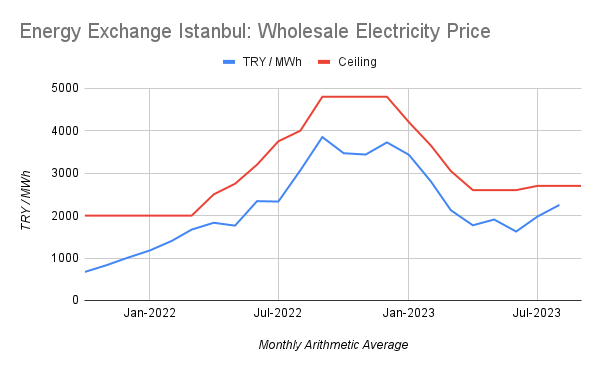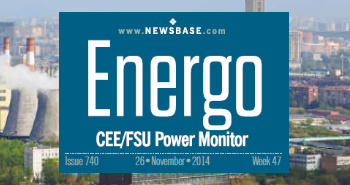Turkey hikes electricity tariff for industry by 25%

Turkey’s energy watchdog EPDK has hiked electricity prices for industrial and commercial clients while leaving consumer prices unchanged, according to the Official Gazette.
Story chart: Electricity prices in Turkey.
As of October 1, the EPDK-set electricity prices (low voltage, single term, single phase) as:
– TRY 3,054/MWh for industry, up 25% m/m and down 25% y/y
– TRY 2,828/MWh for legal persons, including small merchants (higher than 30 kWh per day), up 28% m/m and down 13% y/y
– TRY1,132/MWh for households (higher than 8 kWh/day), unchanged since July and down 43% y/y.
Electricity prices reached record high levels in September 2022. The government then introduced aggressive price cuts prior to the national elections held in May. It is still providing electricity to households at prices half of wholesale prices.
In July, the EPDK hiked the price ceiling on the Day Ahead Market at Energy Exchange Istanbul (EPIAS) to TRY2,700/MWh from TRY2,600/MWh.
On September 2, the daily average price on the market saw a new record of TRY4,419 ($243). The dollar-denominated record was registered on February 13, 2012 at $392.

Chart: Monthly average price and price ceiling at EPIAS.
Since April 2022, there have been multiple price ceilings seen on the market under the so-called maximum price reconciliation mechanism (AUM).
The government transferred funds from renewables to other plants. As of April 1, the price ceiling for coal plants was set at TRY1,800/MWh, while TRY1,700 will be applied for renewables and TRY2,550 for natural gas, fuel oil, naphtha and diesel plants.
On September 29, BloombergHT quoted unnamed sectoral sources as saying that the AUM, which was in March extended by six months, will not be extended ahead of September 30.
In 2022, industry consumed 108 TWh of electricity, representing a 43% share in Turkey’s overall 254 TWh of consumption.
The public and private services sectors consumed 65 TWh, representing a 26% share, while households consumed 62 TWh, equivalent to a 24% share. Agricultural irrigation took a 5% share and lighting 2%.


Follow us online